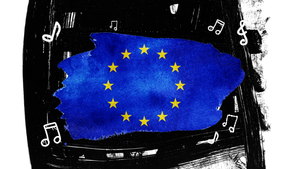The International Artist Organisation has undertaken an extensive survey of artists and musicians across Europe to assess the impact of the 2019 European Copyright Directive, which introduced a new set of rights for music-makers. It ultimately concludes that, while there have been some positive outcomes, there is a lot more work to be done, not least in making sure artists and musicians are even aware of the rights that were introduced.
Some of the issues raised in the survey, the IAO writes in a report based on the study, “could be addressed through increased knowledge. This applies both to artists regarding their rights following the implementation of the directive and to record labels that are not yet in compliance with the new legislation”.
It also proposes that the European Commission should produce guidelines - and that individual EU member states should implement practical mechanisms - to help ensure streaming services, record labels and music distributors know how to be compliant with the directive, and that artists and musicians know how to capitalise on their rights.
When the 2019 directive was being negotiated, most attention in the music industry focused on what began as article thirteen, which reformed the copyright safe harbour.
The music community reckoned that user-upload platforms like YouTube were exploiting the safe harbour to pay less money into the industry, creating a big bad “value gap”. YouTube fought back against that criticism, creating a high profile lobbying battle.
However, there were five other articles in the directive of relevance to artists and songwriters which were more focused on their relationships with record labels and music publishers, in the context of the digital market and digital revenues. Each of those articles introduced a new right.
Rights to “appropriate and proportionate remuneration”, transparency and contract adjustment. The right to alternative dispute resolution as part of the contract adjustment process. And the right to reclaim copyrights previously assigned to business partners if those partners weren't monetising the music - basically a ‘use it or lose it’ obligation for labels and publishers.
IAO - in partnership with collecting society grouping AEPO-ARTIS - surveyed 9542 artists and musicians across nineteen EU countries about the impact of the new rights contained in the directive. Of those surveyed, 4215 are signed to a record label, while 5327 are independent self-releasing artists and session musicians.
As for whether artists are getting “appropriate and proportionate remuneration” from the streaming of their music, that obviously depends very much on how you choose to define “appropriate and proportionate”.
However, 69.1% of the artists surveyed are dissatisfied with their streaming income, 87.6% believe that streaming revenues are not shared out in a fair way, and 71.3% of session musicians believe that the upfront fees they receive for a recording session do not fairly compensate them for their contributions to each track.
Some EU countries, when implementing the directive, introduced new remuneration rights in law for performers, meaning they are due a direct payment when their music is used on at least some digital platforms. However, most countries simply inserted the right to appropriate and proportionate remuneration into local copyright law without defining what that meant or creating any mechanism for increasing performer payments.
“Guidance appears to be needed concerning what kind of appropriate mechanisms member states should implement” to ensure appropriate and proportionate remuneration is achieved, the IAO concludes. Especially for those countries that left it vague when implementing the directive.
Guidance is also probably needed around the right to transparency. 64.7% of the artists surveyed who are signed to record labels reported a lack of transparency about how their music is being exploited on digital platforms and how their digital royalties are calculated.
“Currently, there is insufficient clarification on the amount of information and level of detail required” to meet the transparency obligation in the directive, IAO writes.
It then notes that, earlier this year in the UK, which isn't covered by the directive, the industry agreed a transparency code via a government facilitated process. The European Commission, it adds, “could offer foundational guidance on how to construct an industry-wide, standard agreement containing details of what information must be provided”.
The contract adjustment right allows artists to force a renegotiation of old record contracts if “remuneration originally agreed turns out to be disproportionately low compared to all the subsequent relevant revenues derived from the exploitation of the works or performances”.
Only 4.1% of the signed artists surveyed have attempted to renegotiate old contracts, of which 23% managed to secure new terms with enhanced royalties and additional remuneration.
That so few artists have sought to exercise the contract adjustment right might suggest that the majority believe the remuneration terms in their old deals are fair. Though, given how many artists are unsatisfied with their streaming income, it seems unlikely that’s the only reason for so few artists enforcing this new right.
The IAO says that other factors include “a lack of awareness among artists regarding their rights” and a nervousness about “approaching their contractual counterparts about royalty adjustments and additional payments”.
One issue is the ambiguity over what constitutes “disproportionately low” remuneration, making it hard for artists to assess whether they have a case for adjustment. More education about this right and guidance on what kind of remuneration is unfair is required, the IAO reckons.
As for the other two new rights, 15.3% of signed artists in disagreement with their label have engaged in a voluntary alternative dispute resolution process, while 5.9% have attempted to revoke their rights under the use it or lose it system, with 30.6% succeeding in their efforts.

